Threat Insights
Dissecting the Cicada
A new ransomware group calling themselves Cicada3301 was first observed in June 2024, when they posted four victims on a victim blog. Since then, Cicada3301 has added more victims to this list. The name Cicada3301 appears to be taken from an Internet cryptography game a few years ago, but there is nothing to tie this ransomware group to that phenomenon.
Truesec has now investigated an incident with this new ransomware group and can publish what we have found.
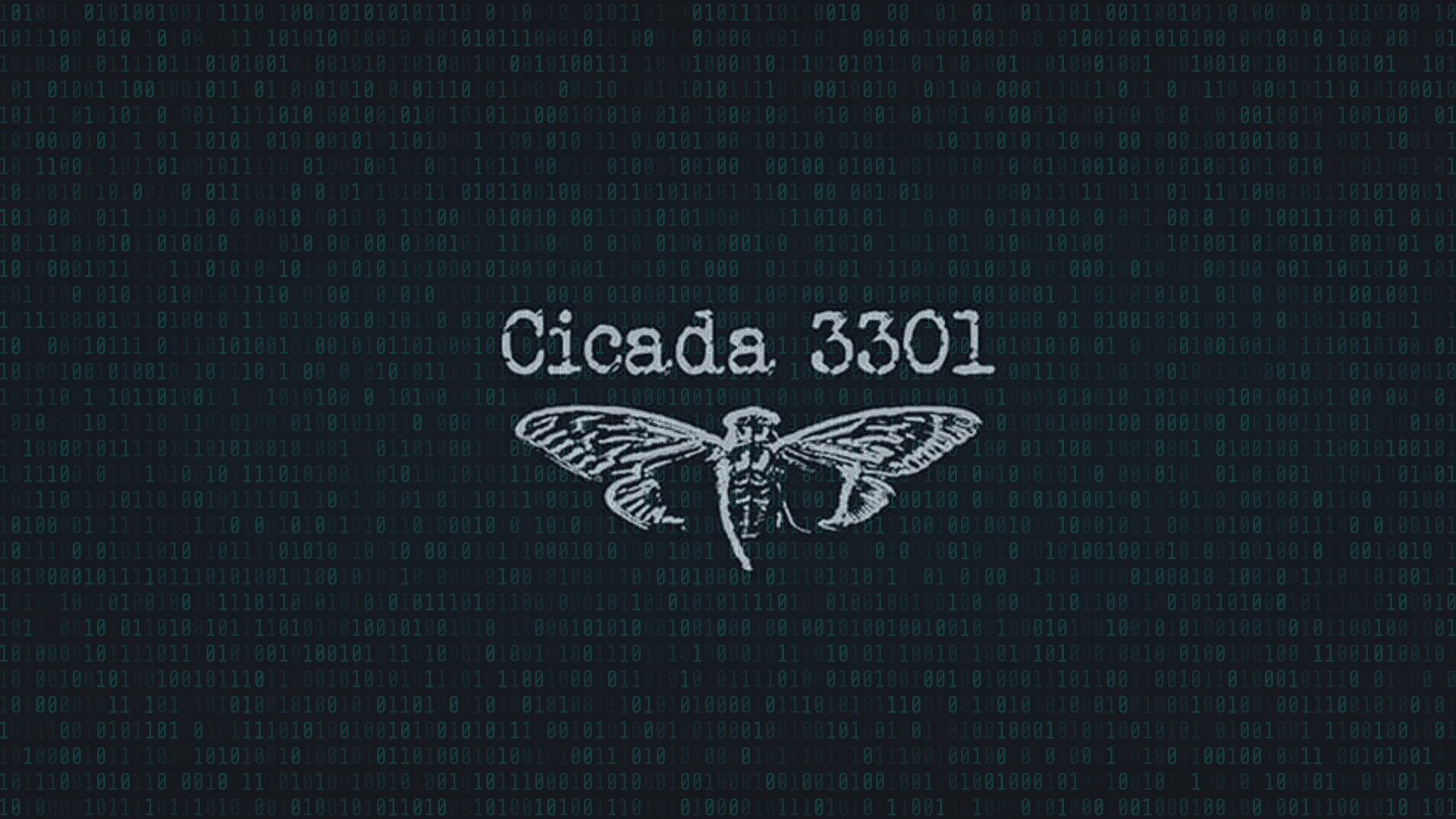
Cicada3301 – A New Ransomware-as-a-Service
The Cicada3301 appears to be a traditional ransomware-as-a-service group that offers a platform for double extortion, with both a ransomware and a data leak site, to its affiliates. The first published leak on the group’s data leak site is dated June 25, 2024. Four days later, on June 29, the group published an invitation to potential affiliates to join their ransomware-as-a-service platform on the cybercrime forum Ramp.
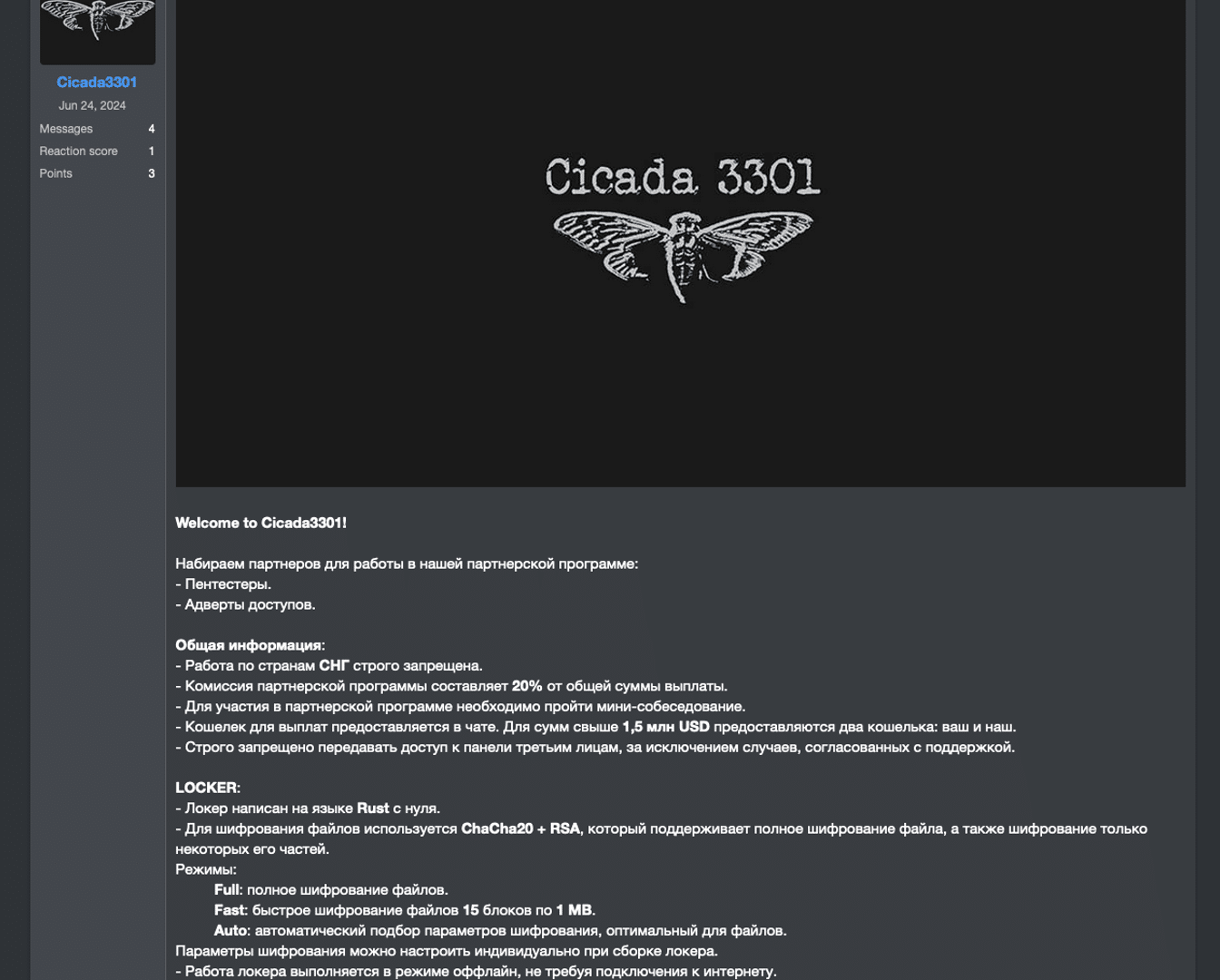
As advertised above, The Cicada3301 group uses a ransomware written in Rust for both Windows and Linux/ESXi hosts. This report will focus on the ESXi ransomware, but there are artifacts in the code that suggest that the Windows ransomware is the same ransomware, just with a different compilation.
While more and more ransomware groups are adding ESXi ransomware to their arsenal, only a few groups are known to have used ESXi ransomware written in Rust. One of them is the now-defunct Black Cat/ALPHV ransomware-as-a-service group. Analysis of the code has also shown several similarities in the code with the ALPHV ransomware.
The Cicada3301 ransomware has several interesting similarities to the ALPHV ransomware.
- Both are written in Rust
- Both use ChaCha20 for encryption
- Both use almost identical commands to shutdown VM and remove snapshots[1]
- Both use –ui command parameters to provide a graphic output on encryption
- Both use the same convention for naming files, but changing “RECOVER-“ransomware extension”-FILES.txt” to “RECOVER-“ransomware extension”-DATA.txt”[2]
- How the key parameter is used to decrypt the ransomware note
Below is an example of code from Cicada3301 that is almost identical to ALPHV.
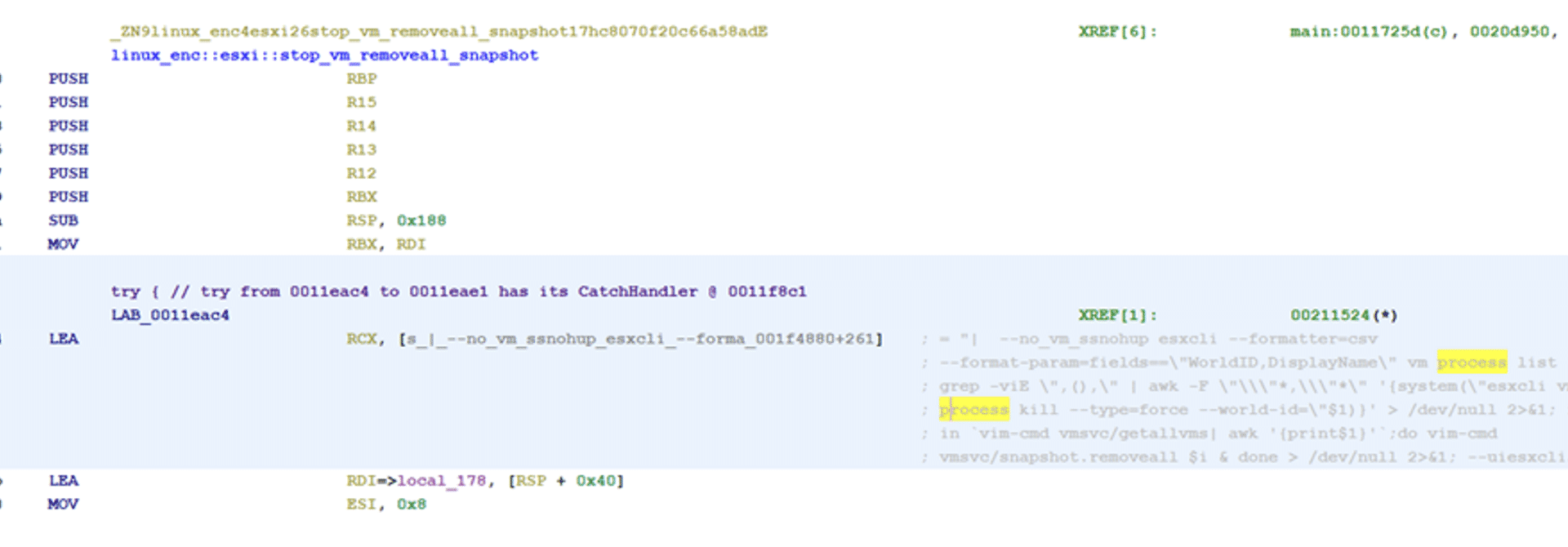
Analysis of the Threat Actor
The initial attack vector was the threat actor using valid credentials, either stolen or brute-forced, to log in using ScreenConnect. The IP address 91.92.249.203, used by the threat actor, has been tied to a botnet known as “Brutus” that, in turn, has been linked to a broad campaign of password guessing various VPN solutions, including ScreenConnect. This botnet has been active since at least March 2024, when the first article about it was published, but possibly longer.[3]
The IP address used in this initial login was used a few hours before the threat actor started to conduct actions on the systems, so it is highly unlikely that an access broker could compromise the system and pass on the access to a buyer in the span of a few hours unless there was an established connection between them.
This could mean that either (A) the threat actor behind the Brutus botnet is directly connected to the Cicida3301 ransomware group or (B) the use of the IP address by two separate threat actors, both using them to compromise victims using ScreenConnect, is purely coincidental. As far as we could observe, this IP address was still part of the “Brutus” botnet at the time of the ransomware attack.
The timeline is also interesting as the Brutus botnet activity began on March 18, two weeks after it was reported that the BlackCat/ALPHV ransomware group conducted an apparent exit scam and ceased their operations.[4]
It is possible that all these events are related and that part of the BlackCat group has now rebranded themselves as Cicada3301 and teamed up with the Brutus botnet, or even started it themselves, as a means to gain access to potential victims, while they modified their ransomware into the new Cicada3301. Having easy access to a reliable initial access broker can be a way to offer a more “complete” service for the group’s affiliates.
The group could also have teamed up with the malware developer behind ALPHV. This individual appears to have worked for several different ransomware groups in the past.[5]
It is also possible that another group of cybercriminals obtained the code to ALPHV and modified it to suit their needs. When BlackCat shut down their operations, they stated that the source code to their ransomware was for sale for $5 million. It is also important to note that, as far as we can tell, the Cicada3301 is not quite as sophisticated as the ALPHV ransomware. The creators may decide to add additional features, such as better obfuscation, later.
Regardless of whether Cicada3301 is a rebrand of ALPHV, they have a ransomware written by the same developer as ALPHV, or they have just copied parts of ALPHV to make their own ransomware, the timeline suggests the demise of BlackCat and the emergence of first the Brutus botnet and then the Cicada3301 ransomware operation may possibly be all connected. More investigation is needed before we can say anything for certain, however.
Technical Details
Initial Observations
The ransomware is an ELF binary, and as shown by Detect It Easy, it is compiled and written in Rust.
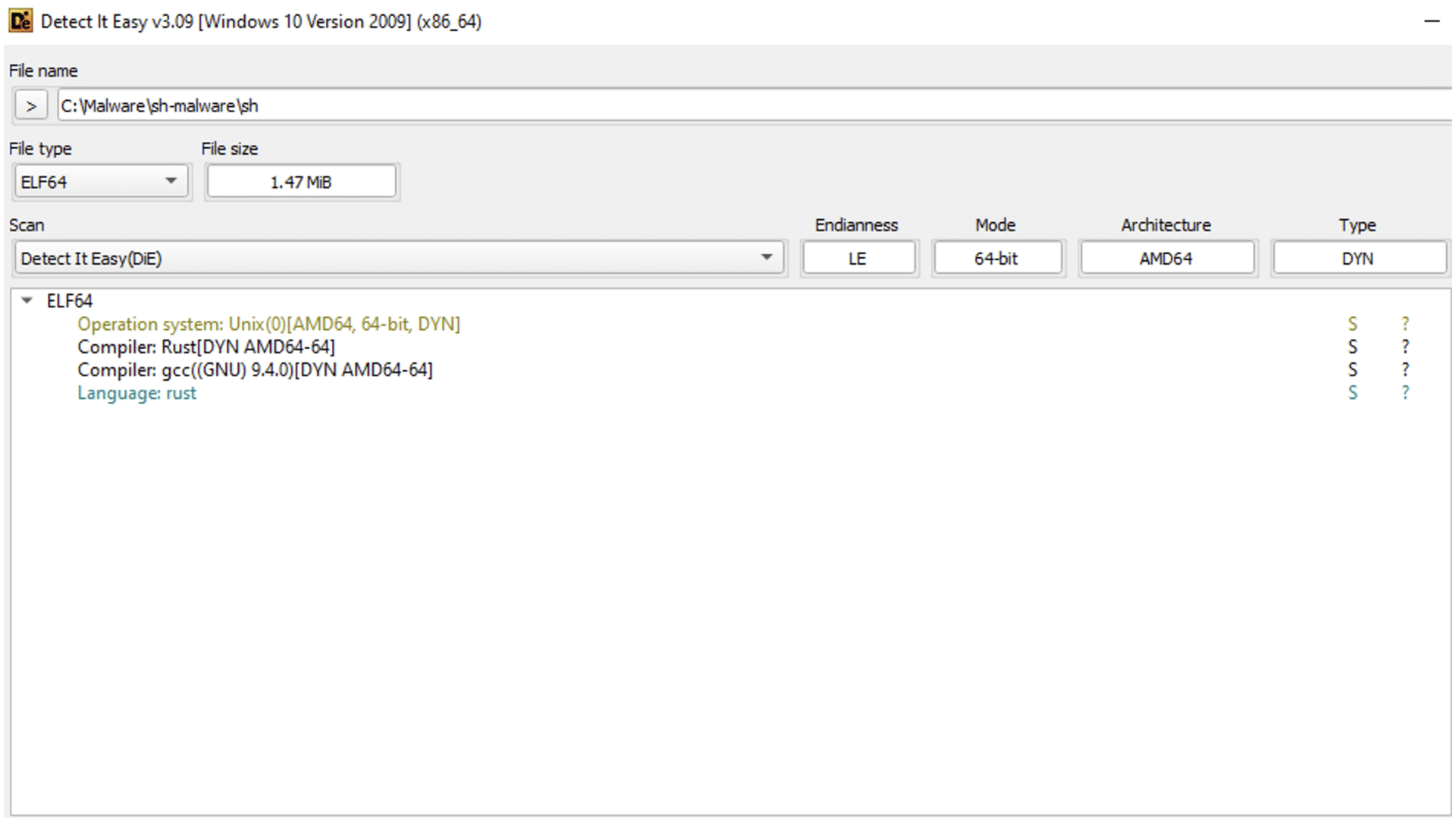
That the ransomware is written in Rust was further strengthened by investigating the .comment section of the binary. There, it was revealed that version 1.79.0 of Rust has been used.
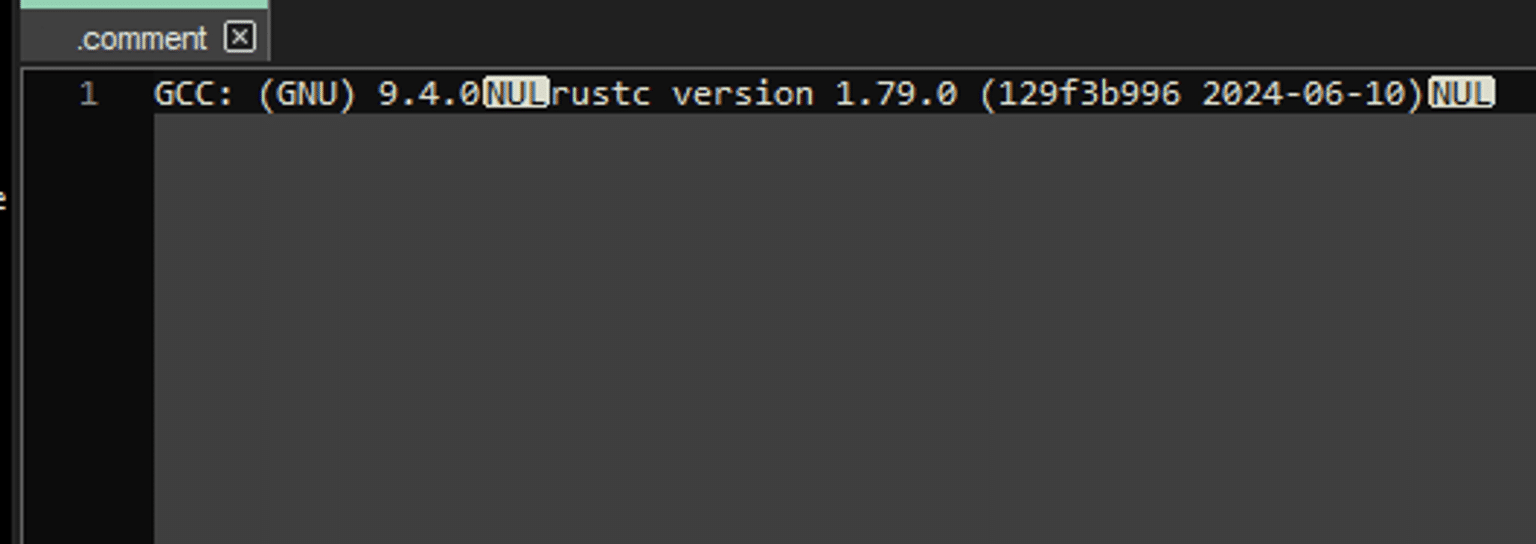
Finally, it was further validated that the binary was written in Rust by just looking for strings in the ransomware. With string references to “Rust”, and strings referencing to “Cargo” that is Rust’s build system and package manager, it is concluded that the ransomware is written in Rust.
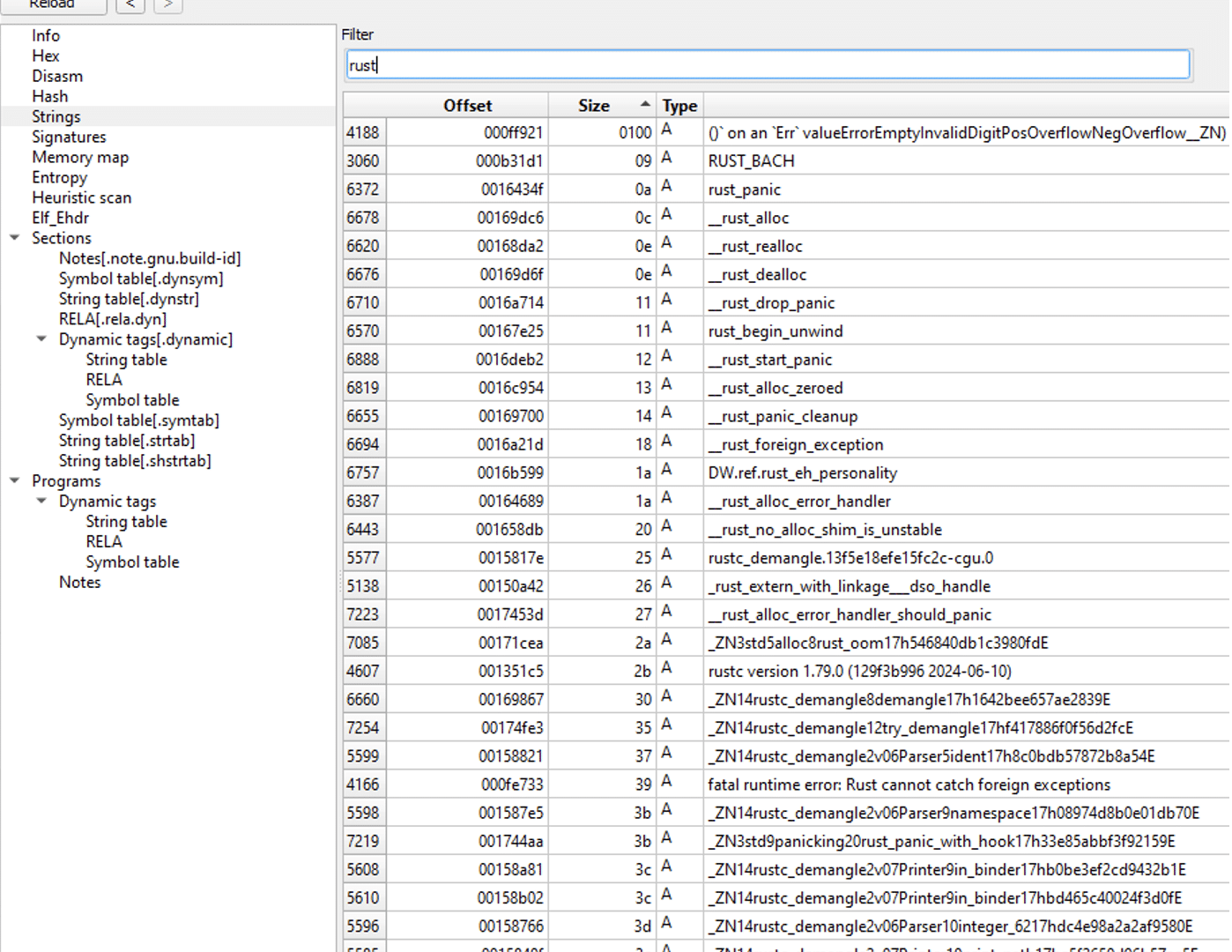
Ransomware Functionality
At the start of the ransomware main function, there are several references to parameters that should be passed as an argument to binary, using clap::args, that hold different functionalities that can be used in combination as well.
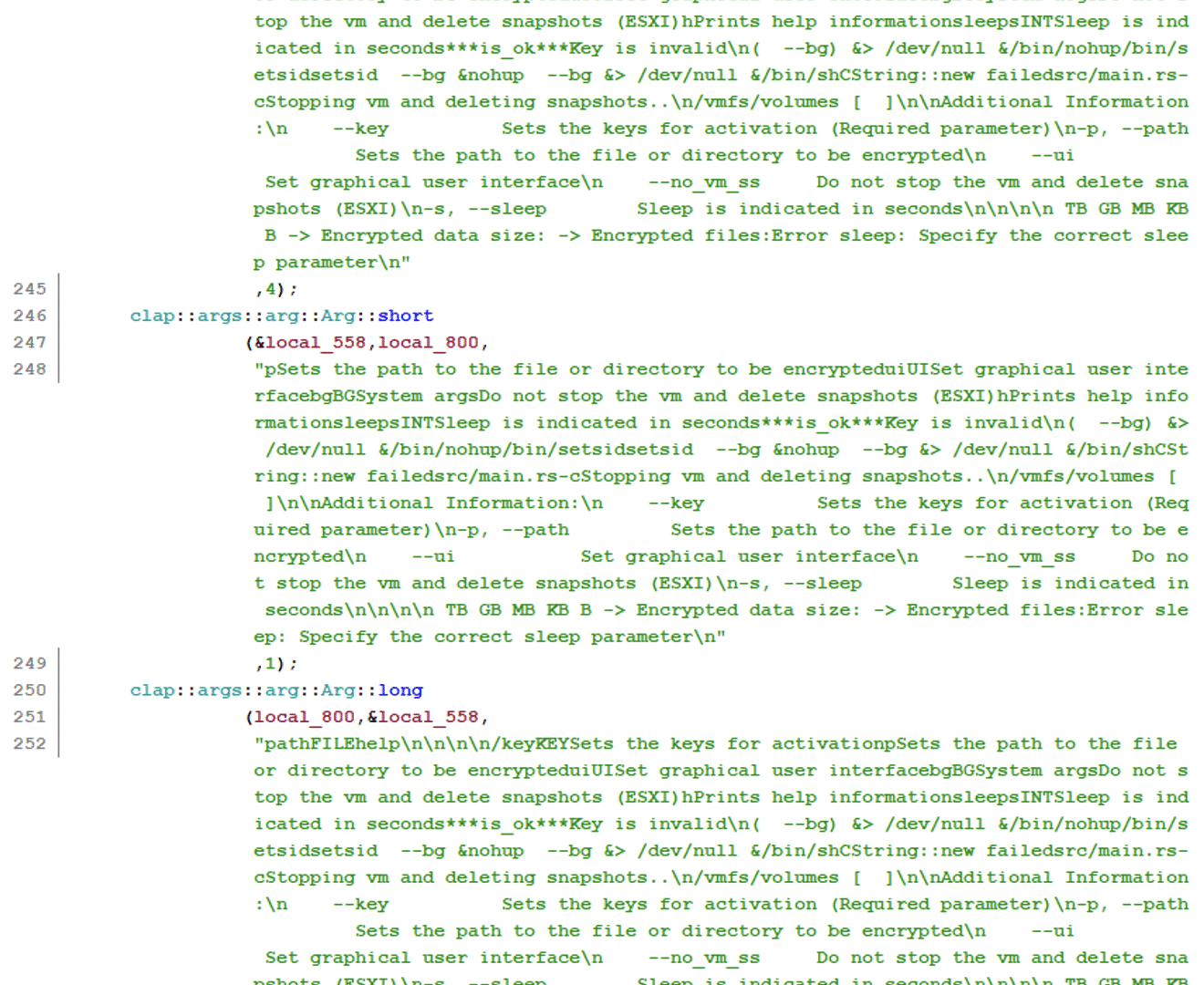
The binary has a built-in help function, giving an explanation of the different parameters and how they should be used.
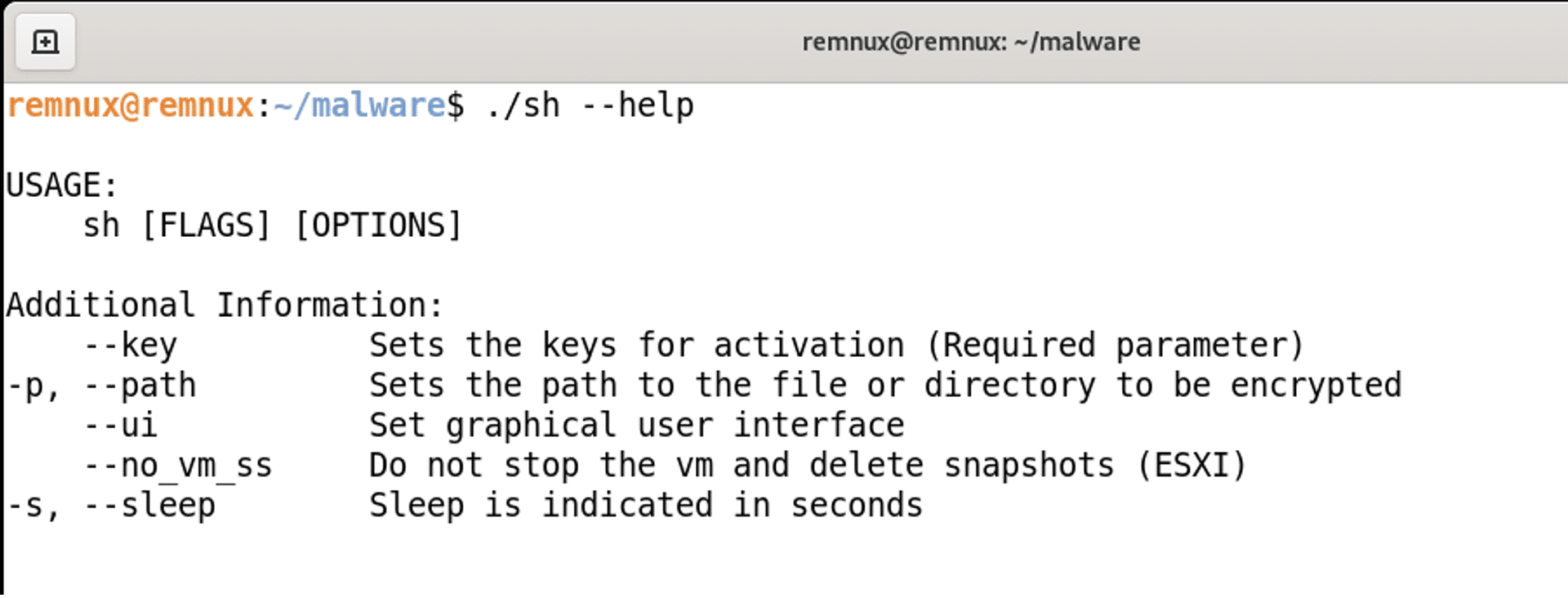
The main function of the binary, which is done by the malware developer, is called linux_enc. By searching for linux_enc function a general program flow of the binary could be found.
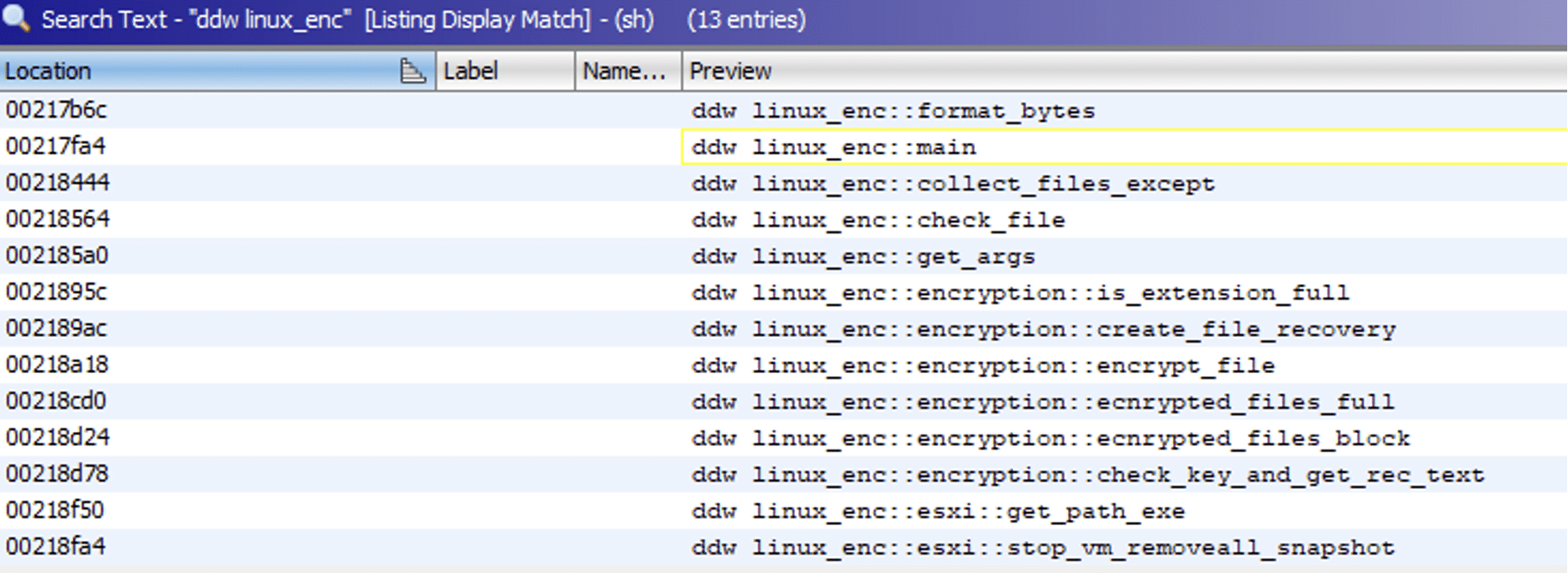
The Ransomware Parameters
It is possible to add a sleep parameter of the binary, adding a delay in seconds when the ransomware should be executed. For the sleep function, the ransomware uses the built-in sleep function std::thread::sleep

The ui parameter prints the result of the encryption to the screen, showing what files have been encrypted and a statistic of the total amount of files and data that has been successfully encrypted.
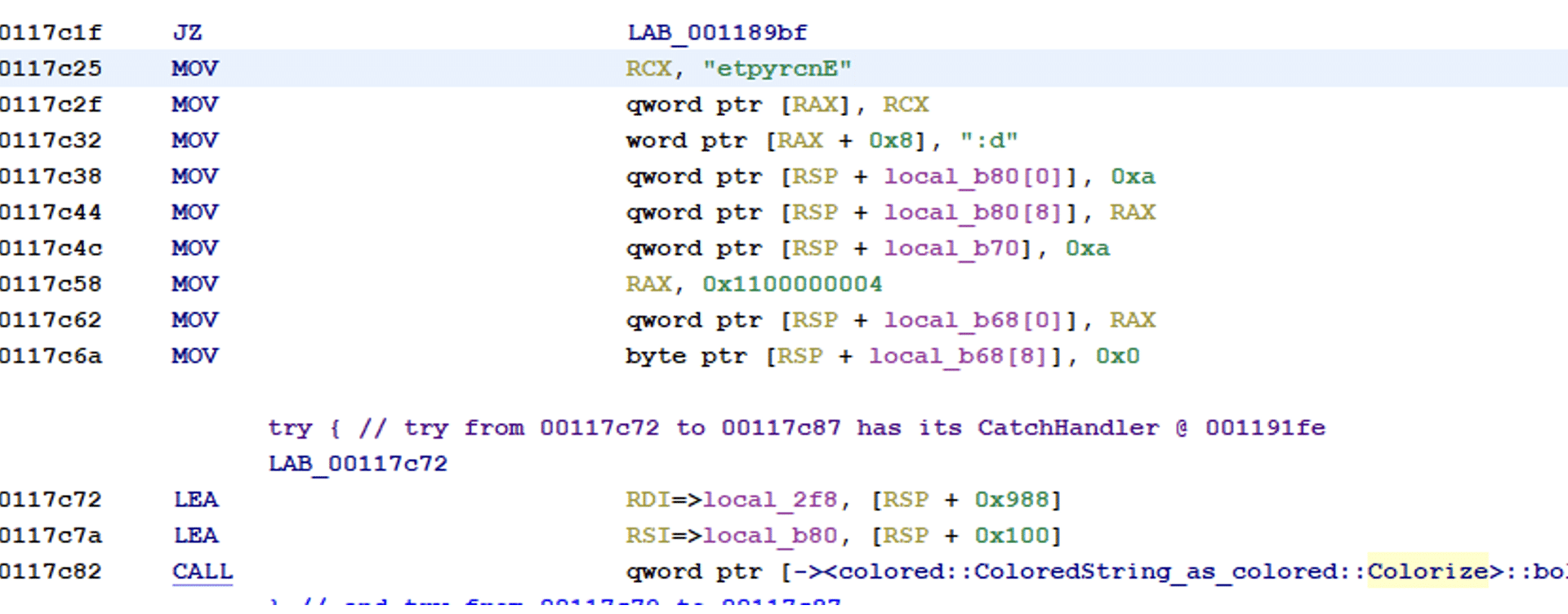
The ui parameter was confirmed by running the ransomware and using the ui flag, showing the progress and statistics on the command prompt.

If the parameter no_vm_ss is chosen, the ransomware will encrypt files without shutting down the virtual machines that are running on ESXi. This is done by using the built-in esxicli terminal that will also delete snapshots.

The full commands that the ransomware is utilizing are the following.
esxcli –formatter=csv –format-param=fields==\”WorldID,DisplayName\” vm process list | grep -viE \”,(),\” | awk -F \”\\\”*,\\\”*\” \'{system(\”esxcli vm process kill –type=force –world-id=\”$1)}\’ > /dev/null 2>&1;
for i in `vim-cmd vmsvc/getallvms| awk \'{print$1}\’`;do vim-cmd vmsvc/snapshot.removeall $i & done > /dev/null 2>&1
The most important parameter is the one named key. This needs to be provided, otherwise the binary will fail and show on the screen “Key is invalid”.

The binary has a function called check_key_and_get_rec_text. It will make a check to see if the provided key is of length 0x2C to enter the function, but the size is also provided as an argument to the function. If the length is less than 0x2C the binary will terminate directly.

If the size of the key is correct, the ransomware will enter the function check_key_and_get_rec_text. One of the first things that happen in the function is to load an encrypted base64 encoded data blob that is stored in the data section. The decoded data is then stored and will be used later in the function.

The provided parameter key is then taken as a key to decrypt, using ChaCha20, the encoded data blob. If the provided key is correct the message that is shown in the ransomware note will be decrypted.
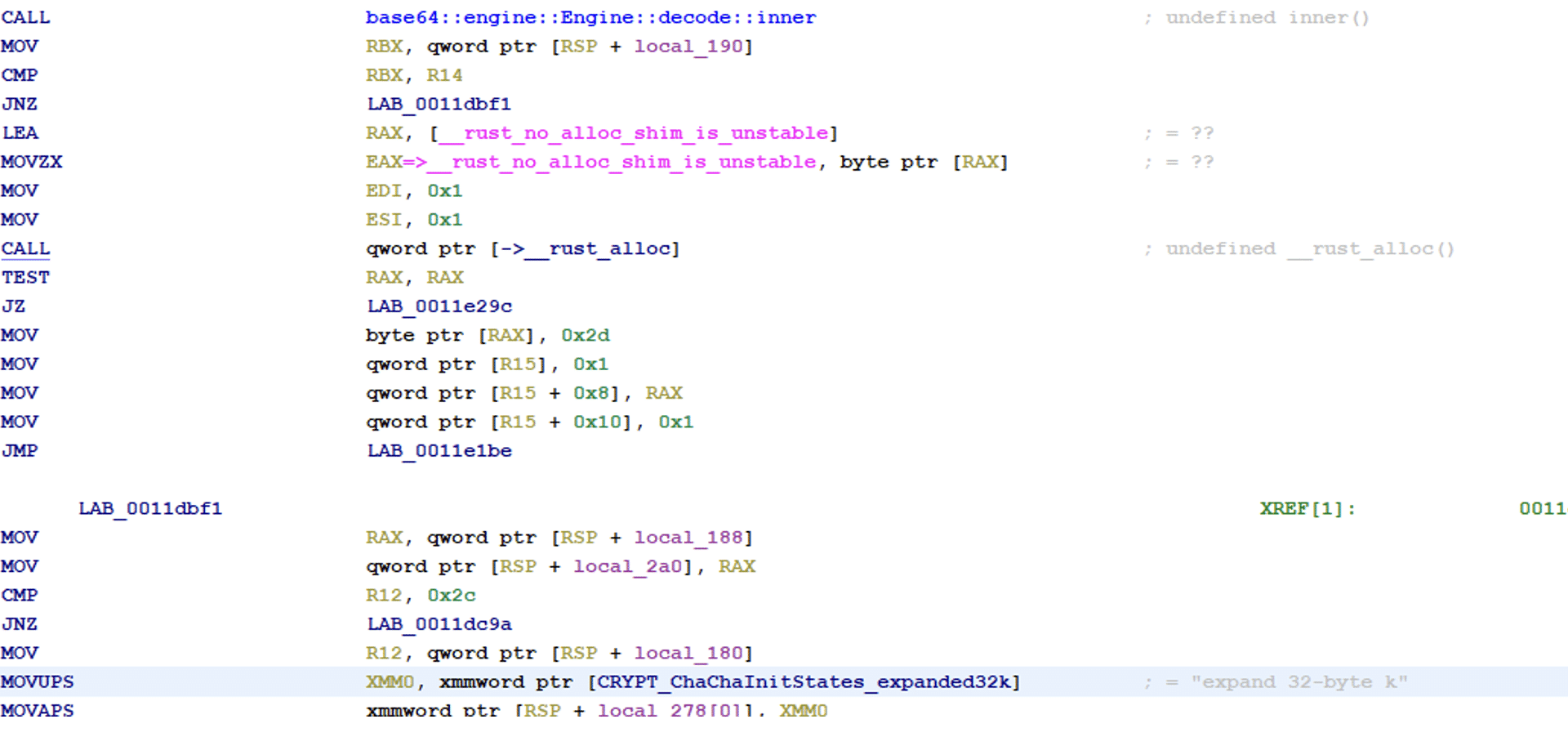
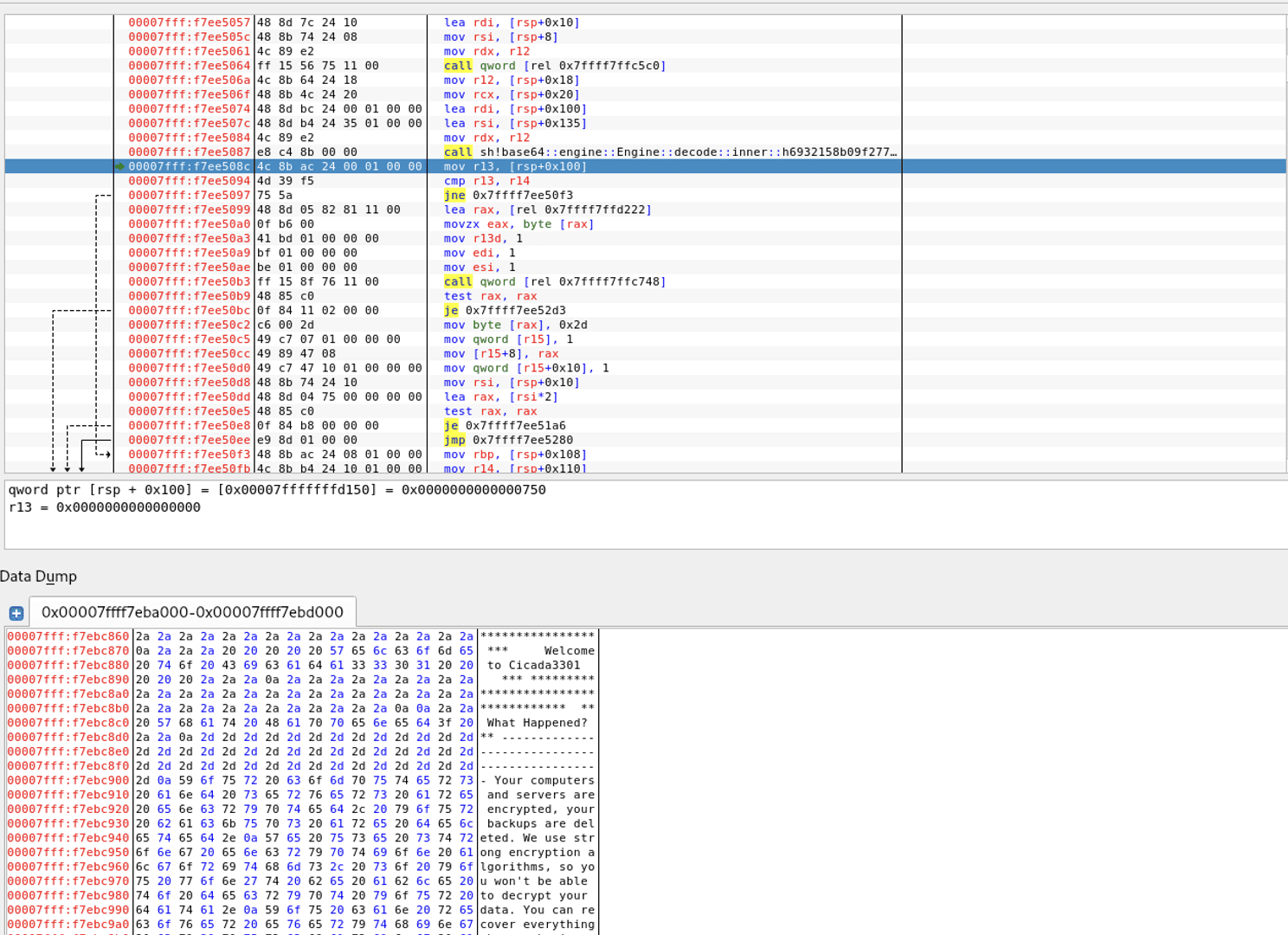
To verify that the provided key was correct after exiting the check_key_and_get_rec_text function, there is a check that the ransomware note has been decrypted properly.
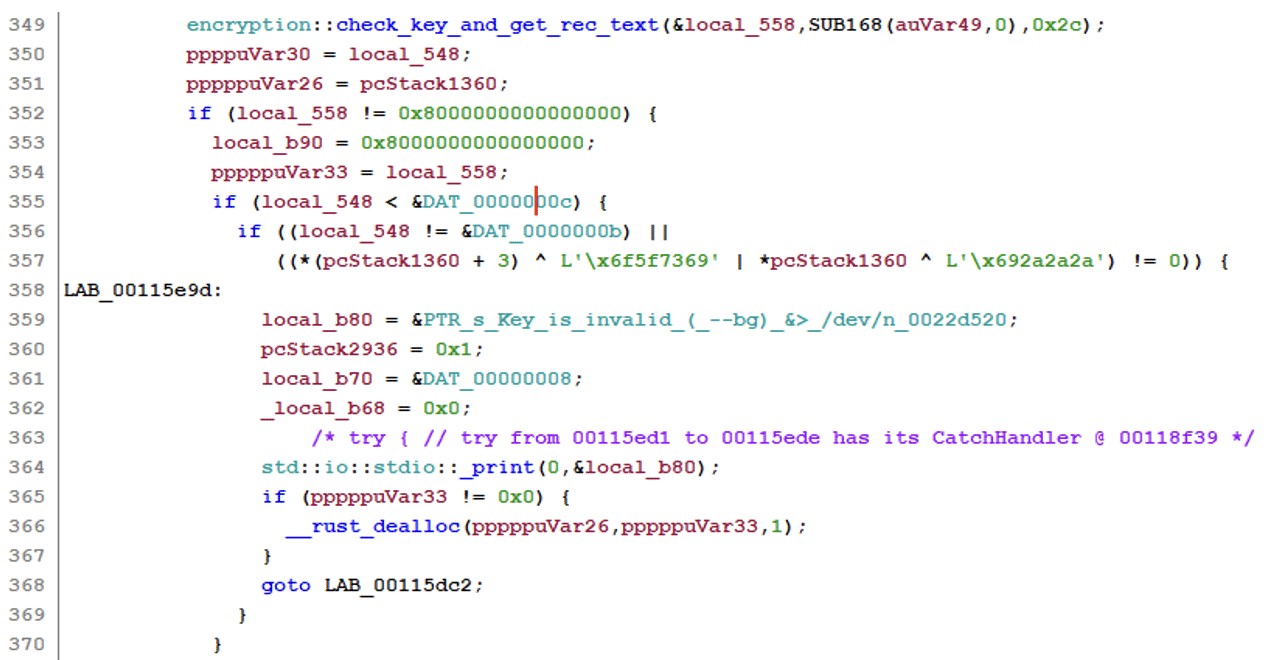
File Encryption
The functions start by using OsRng to generate entropy for the symmetric key. OsRng is a random number generator that retrieves randomness from the operating system.

The binary contains a function called encrypt_file that handles the encryption of the files. The first function is to extract another public pgp key that is stored in the data section. This key is used for encryption to encrypt the symmetric key that is generated for file encryption.

It then creates the file that will store the ransomware message in the folder of the encrypted files. It will be named “RECOVER-’ending of encrypted file’-DATA.txt”
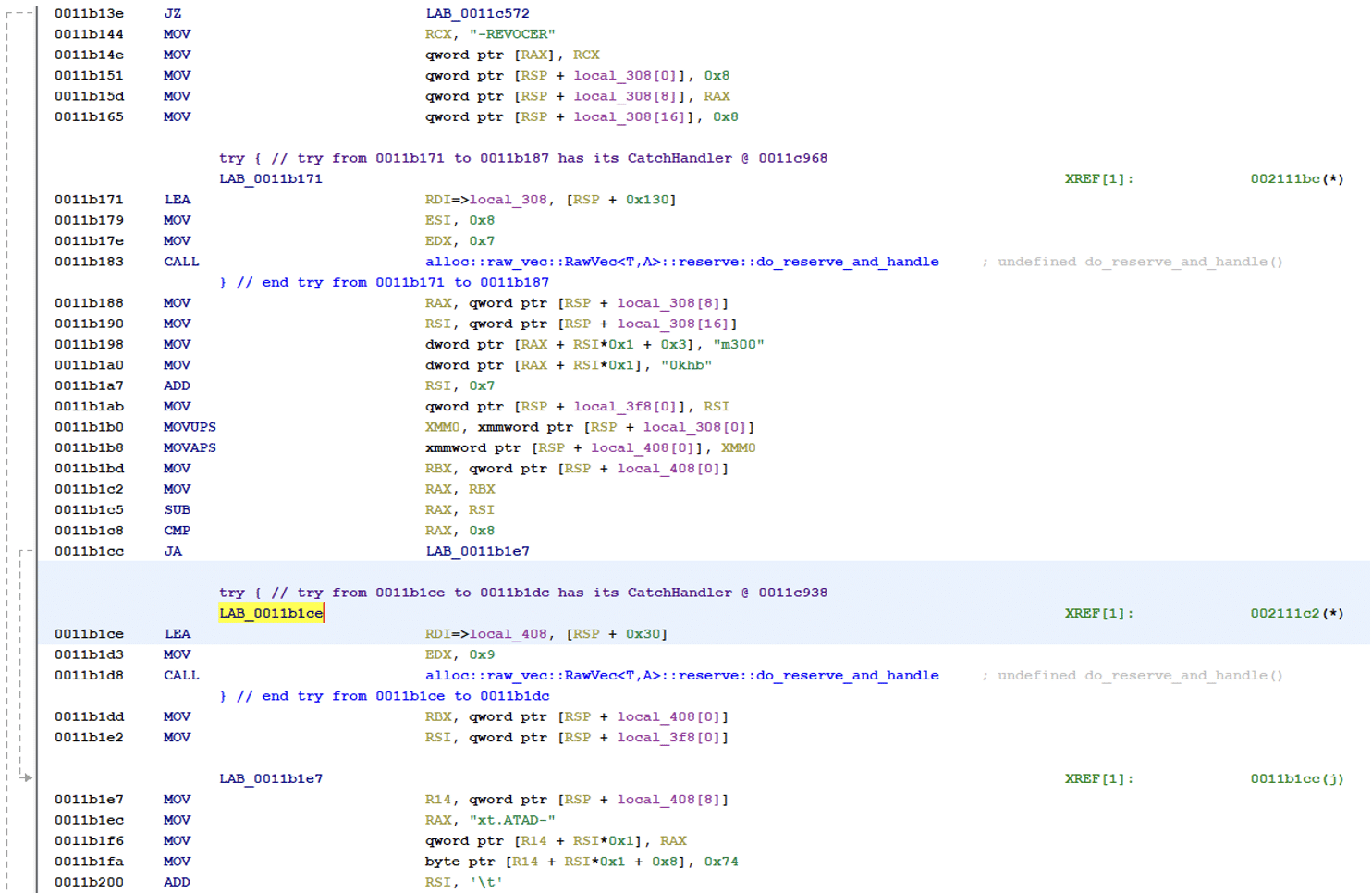
Inside the encryption function there is a list of file extensions where most of them are related to either documents or pictures. This indicates that the ransomware has been used to encrypt Windows systems before being ported to ransomware ESXi hosts.
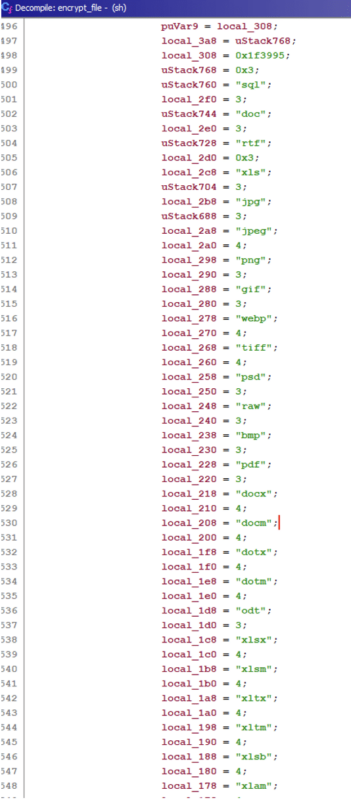
The full list of extensions:
jpeg, webp, tiff, docx, docm, dotx, dotm, xlsx, xlsm, xltx, xltm, xlsb, xlam, pptx, pptm, ptox, potm, ppsx, ppsm, sql, doc, rtf, xls, jpg, png, gif, psd, raw, bmp, pdf, odt, ods, odp, mdf, txt
Then it checks the size of the file. If it is greater than 0x6400000, then it will encrypt the file in parts, and if it is smaller, the whole file will be encrypted.
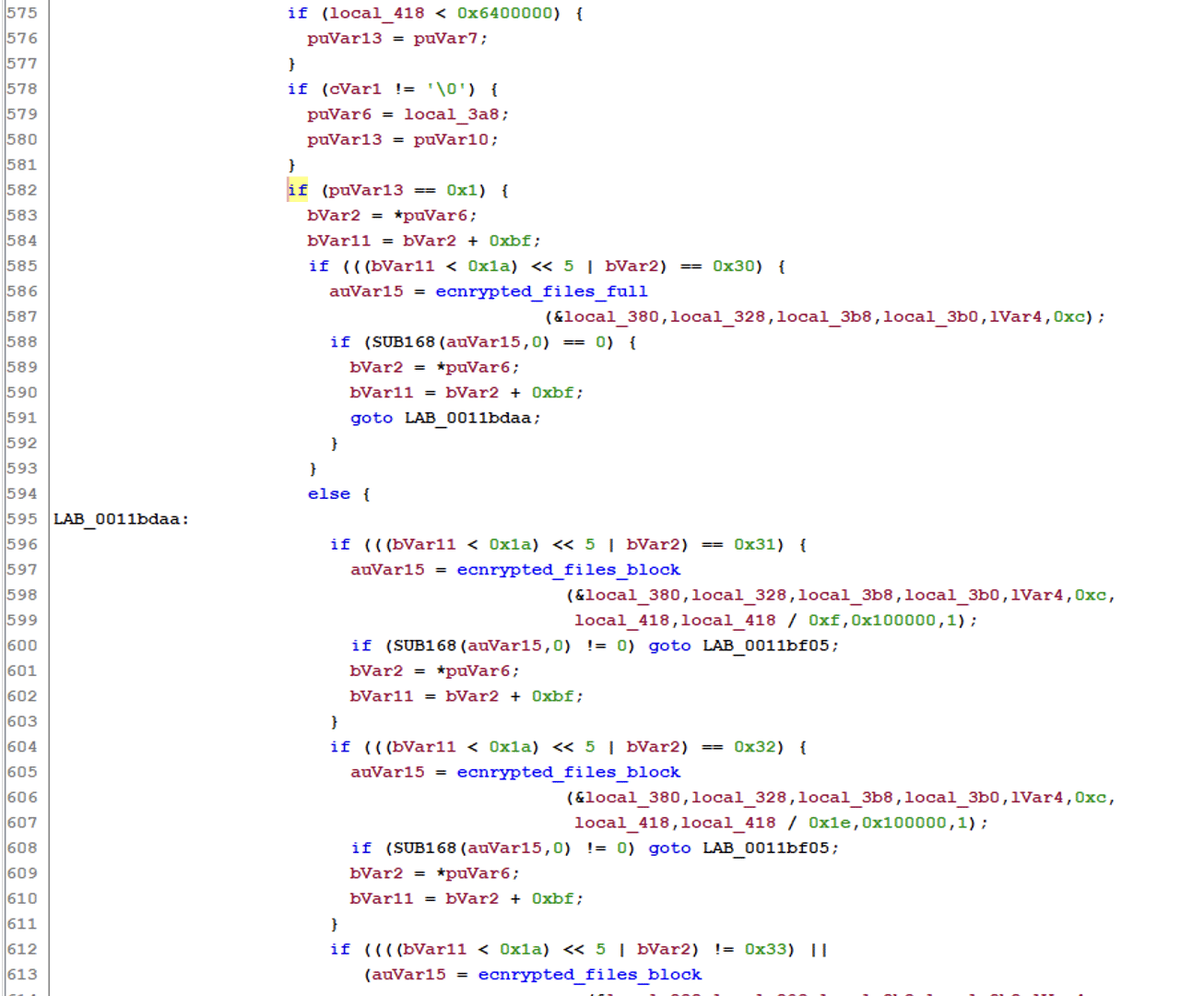
The files will then be encrypted with a symmetric key generated by OsRng using ChaCha20.
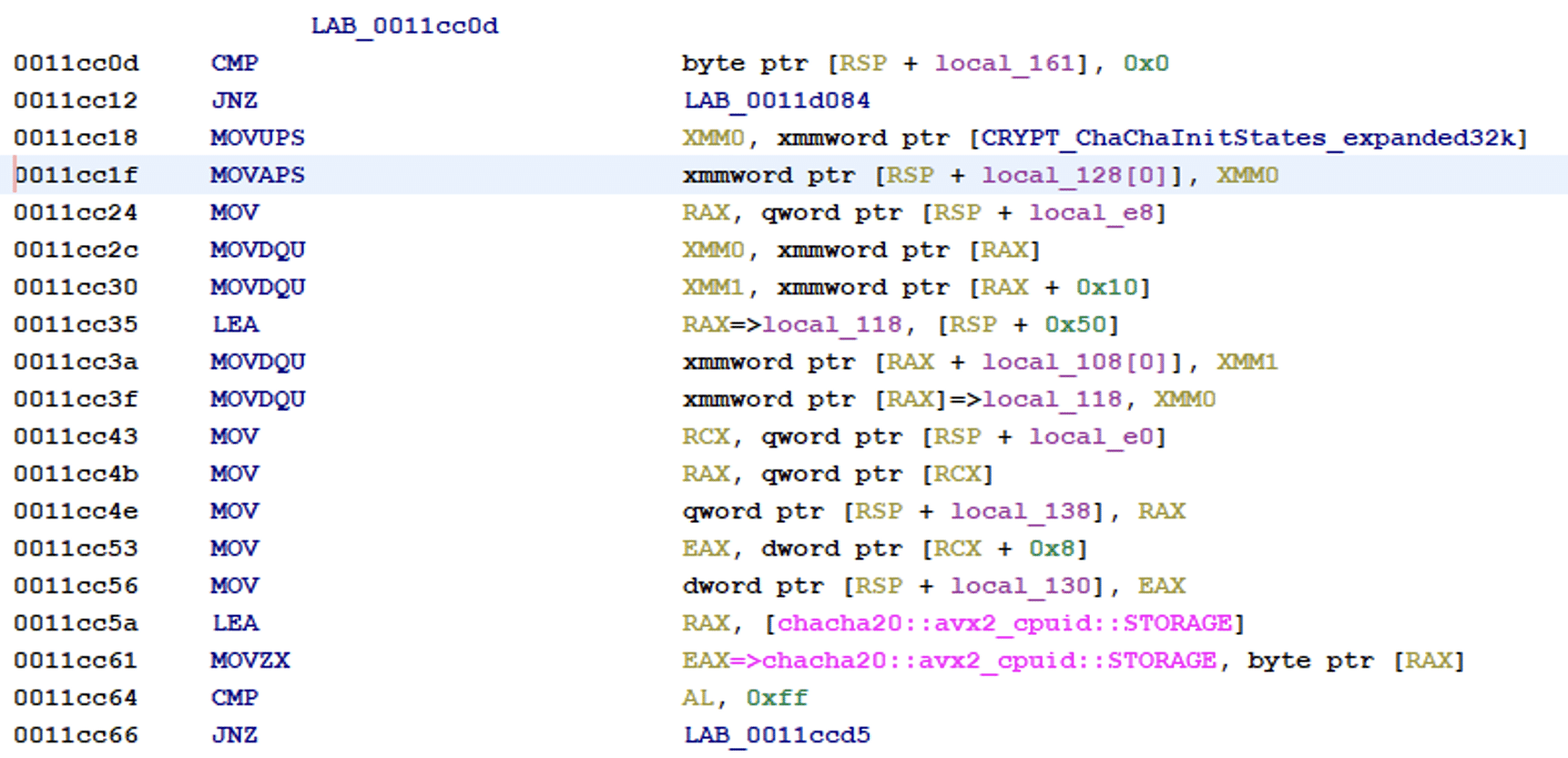
After the encryption is done, the ransomware encrypts the ChaCha20 key with the provided RSA key and finally writes the extension to the encrypted file.
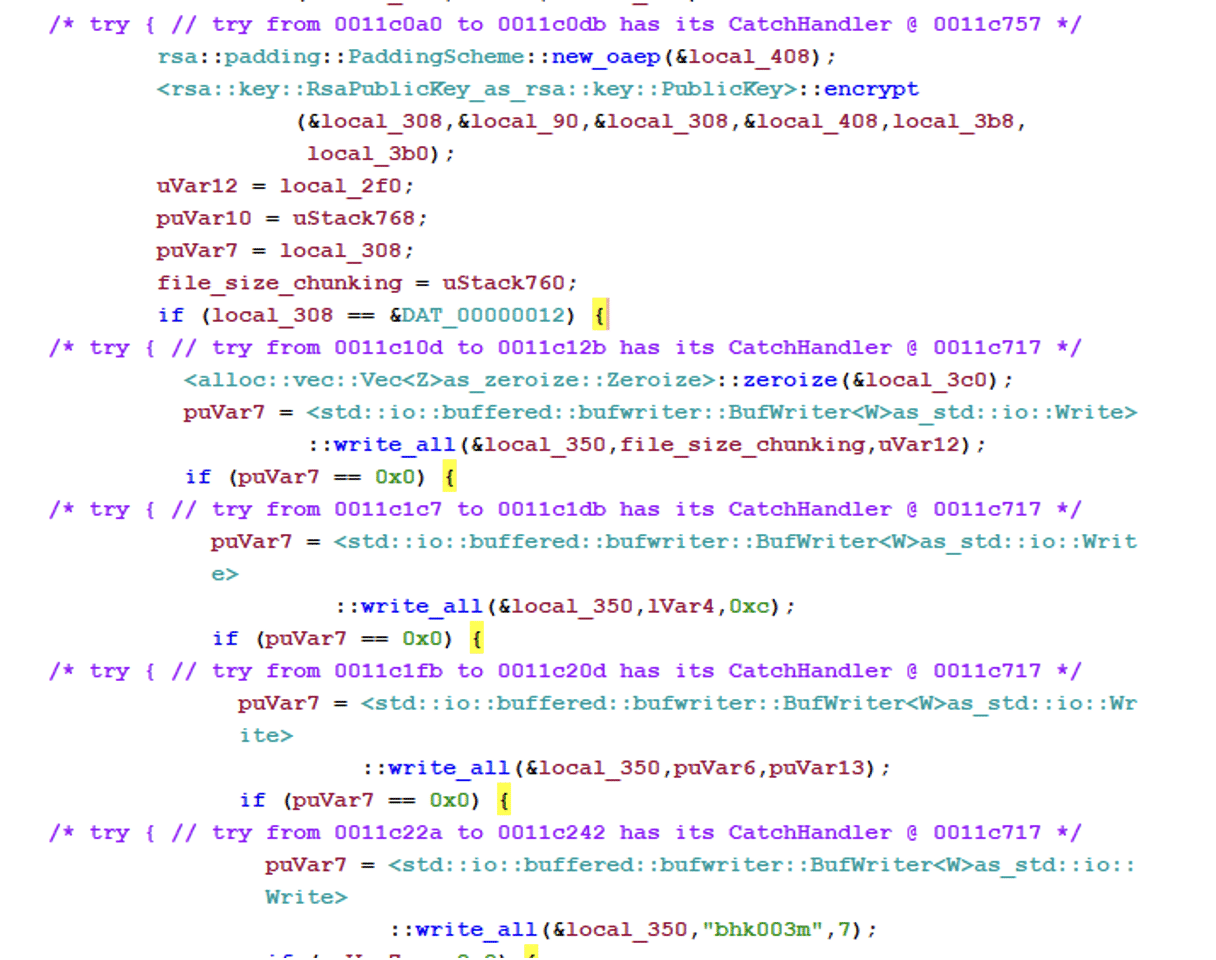
The file extension is also added to the end of the encrypted file, together with the RSA-encrypted ChaCha20 key.
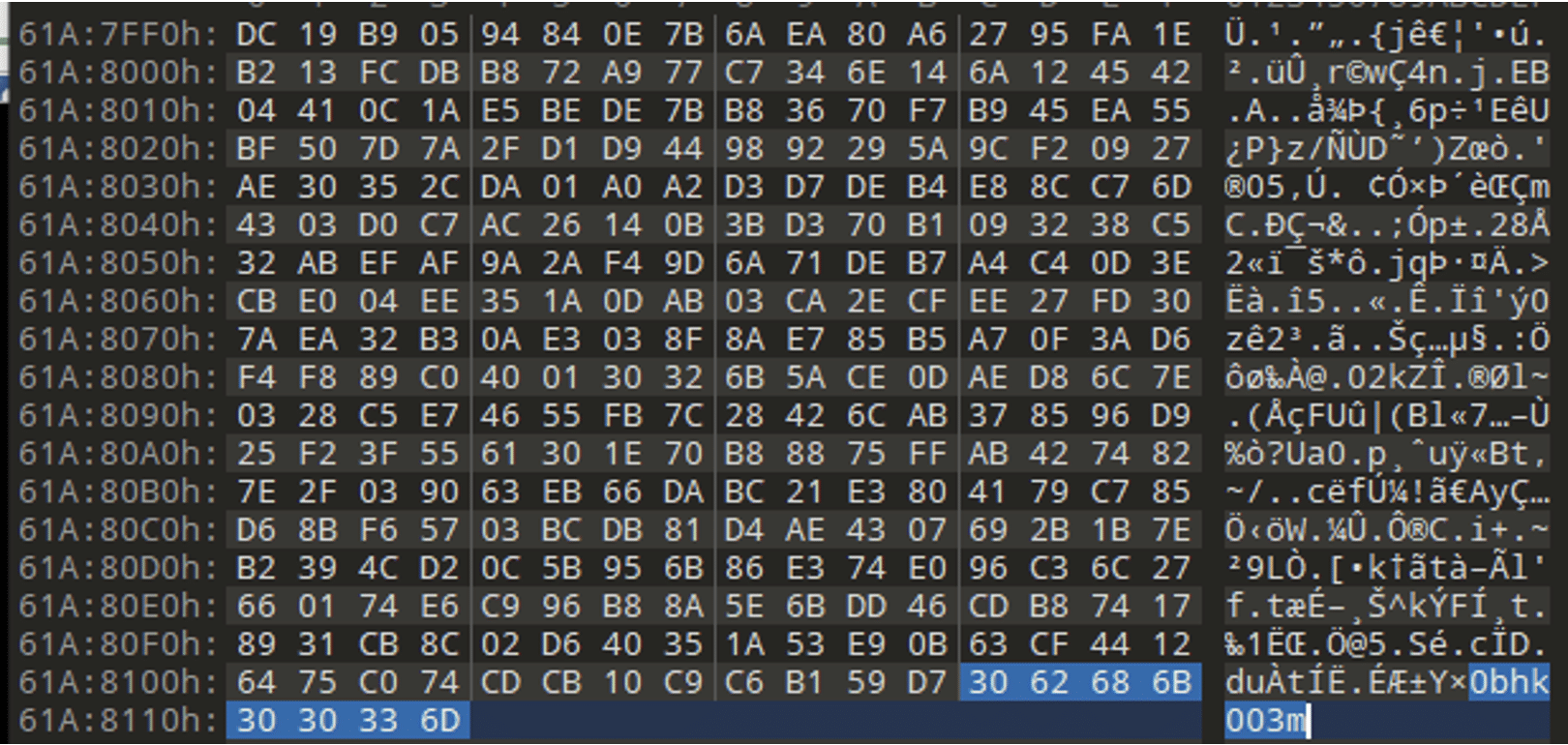
YARA Rule for Cicada3301 Threat Hunting
rule elf_cicada3301{
meta:
author = "Nicklas Keijser"
description = "Detect ESXi ransomware by the group Cicada3301"
date = "2024-08-31"
strings:
$x1 = "no_vm_ss" nocase wide ascii
$x2 = "linux_enc" nocase wide ascii
$x3 = "nohup" nocase wide ascii
$x4 = "snapshot.removeall" nocase wide ascii
$x5 = {65 78 70 61 6E 64 20 33 32 2D 62 79 74 65 20 6B} //Use of ChaCha20 constant expand 32-byte k
condition:
uint16(0) == 0x457F
and filesize < 10000KB
and (all of ($x*))
}
[1] https://www.forescout.com/resources/analysis-of-an-alphv-incident
[2] https://blogs.vmware.com/security/2022/09/esxi-targeting-ransomware-the-threats-that-are-after-your-virtual-machines-part-1.html
[3] https://annoyed.engineer/2024/03/23/the-brutus-botnet/
[4] https://www.bleepingcomputer.com/news/security/cisco-warns-of-large-scale-brute-force-attacks-against-vpn-services/
[5] https://krebsonsecurity.com/2022/01/who-wrote-the-alphv-blackcat-ransomware-strain/

